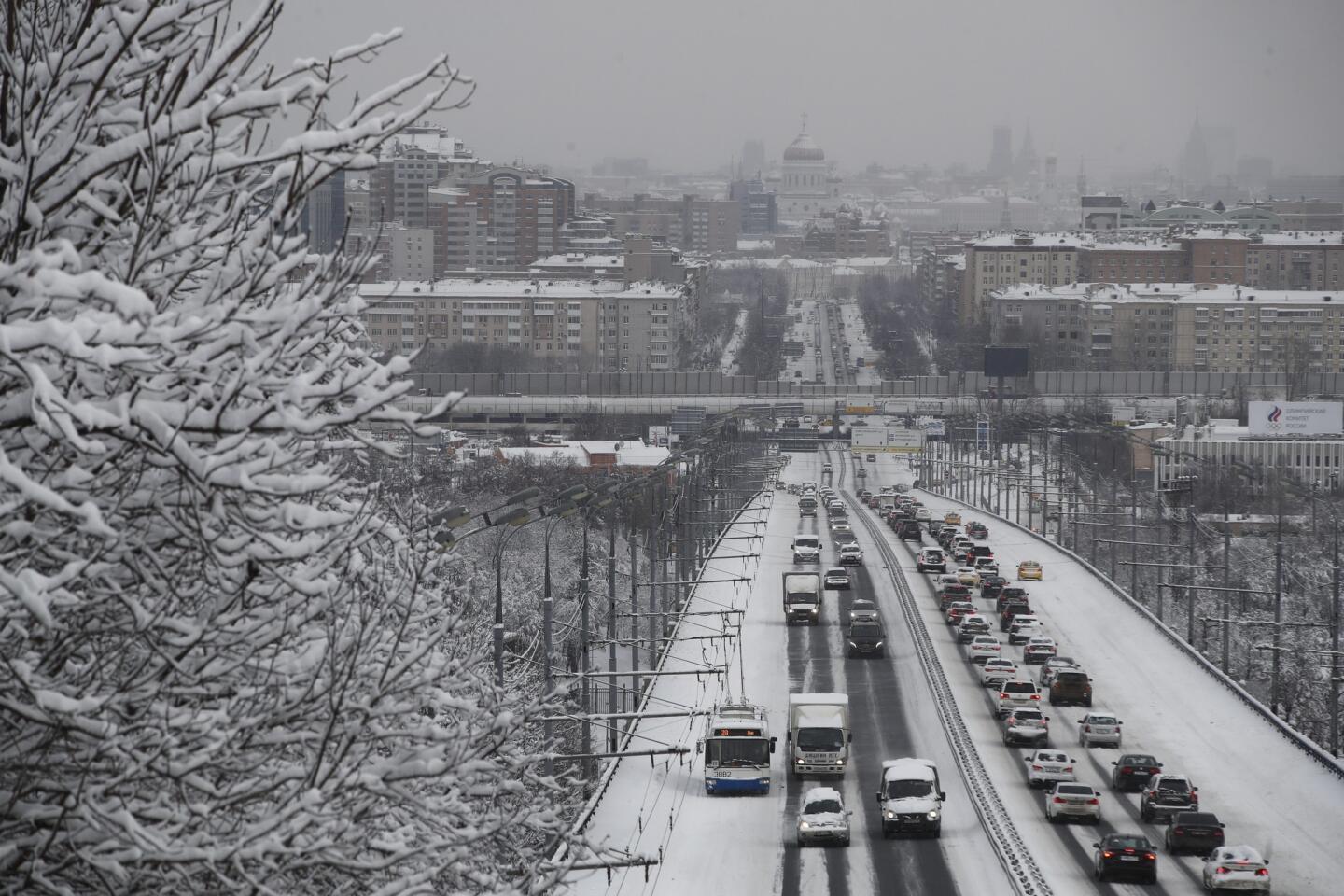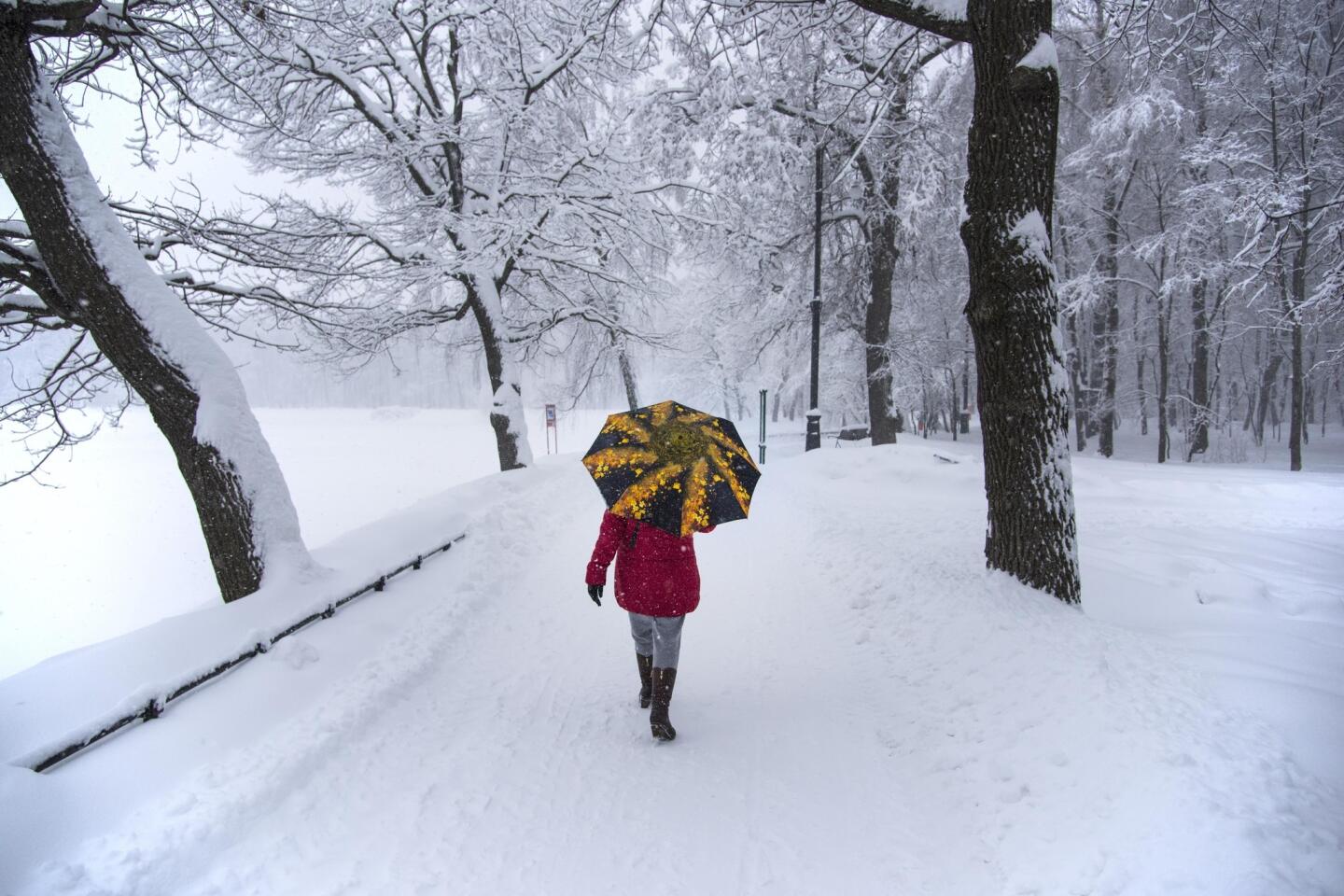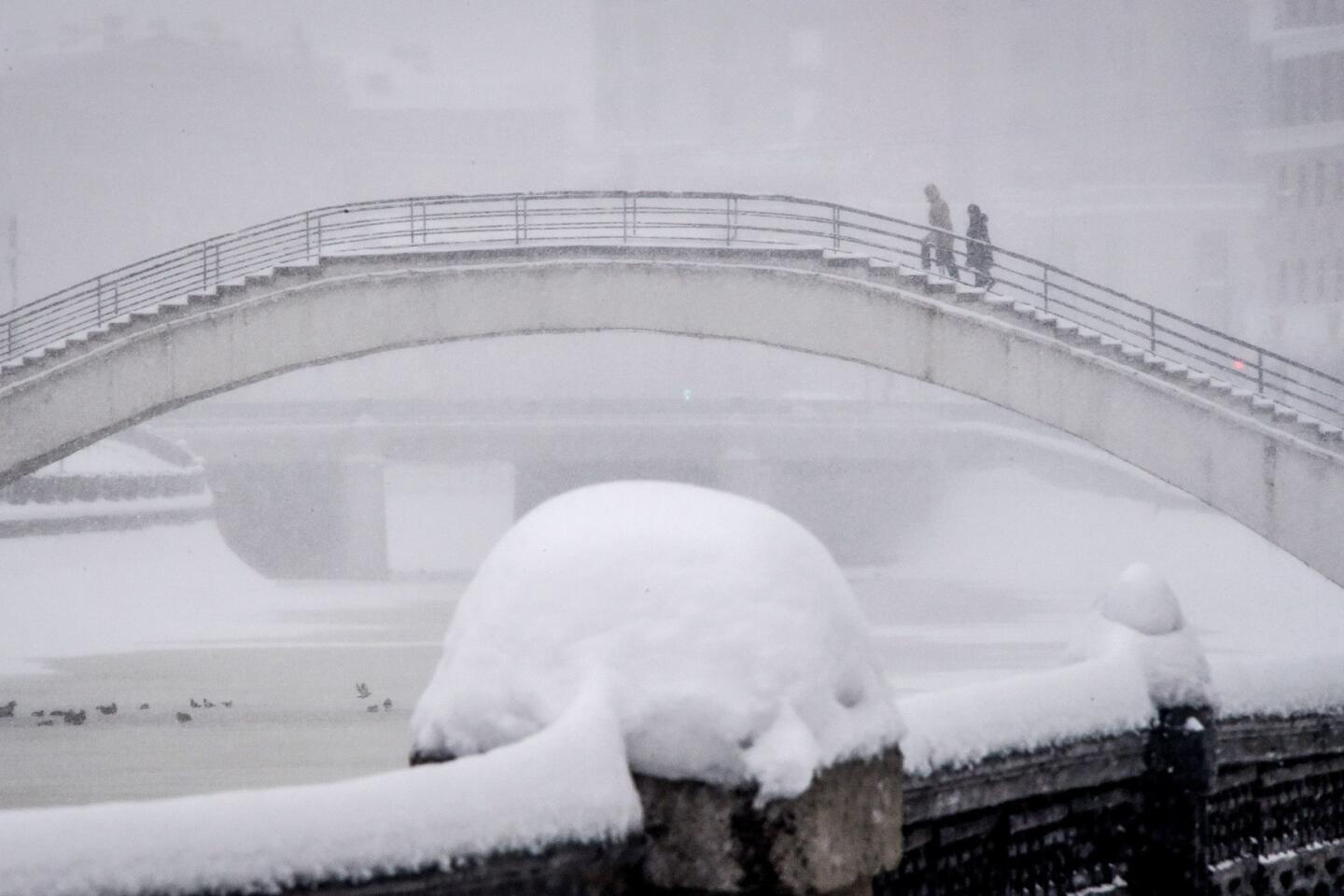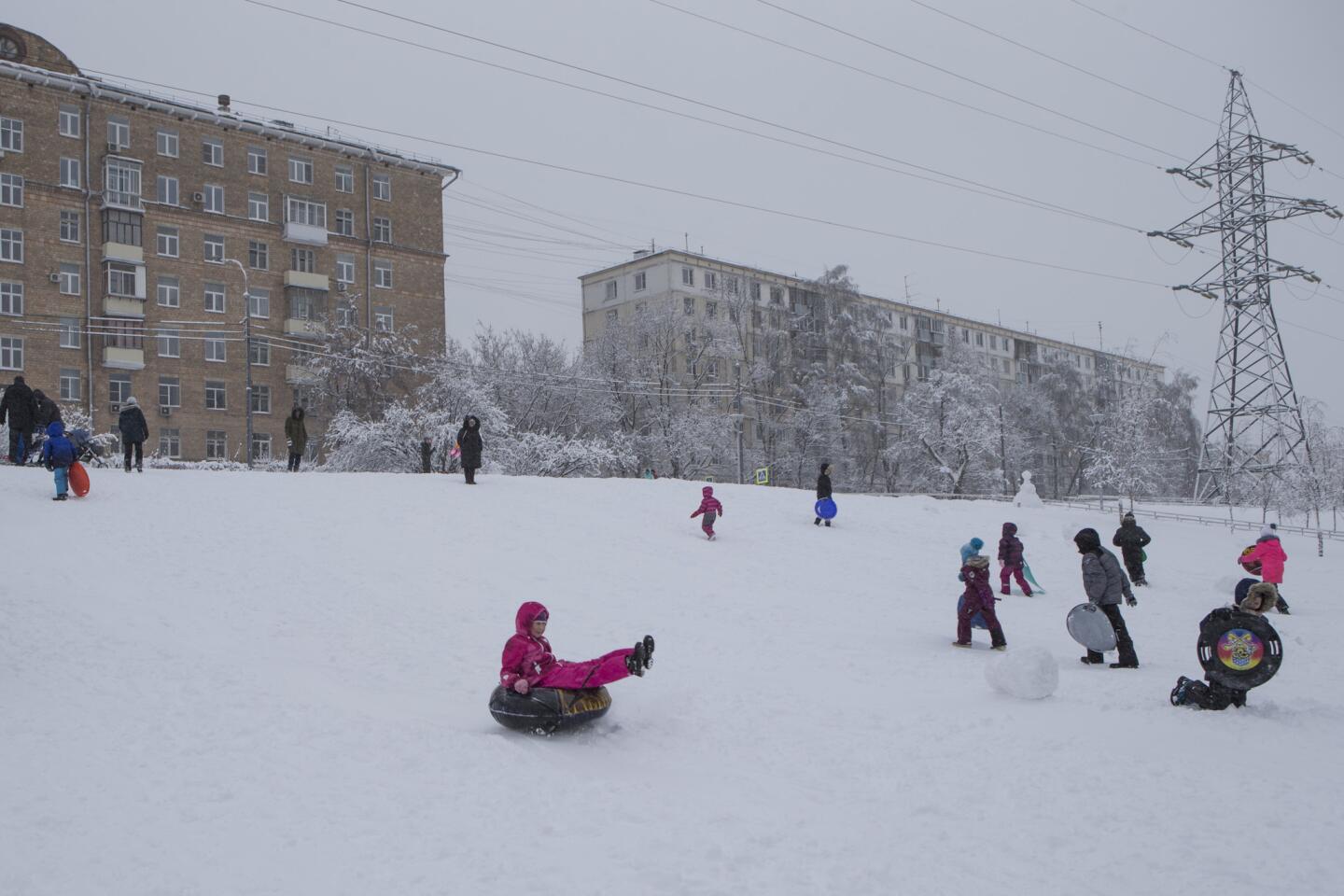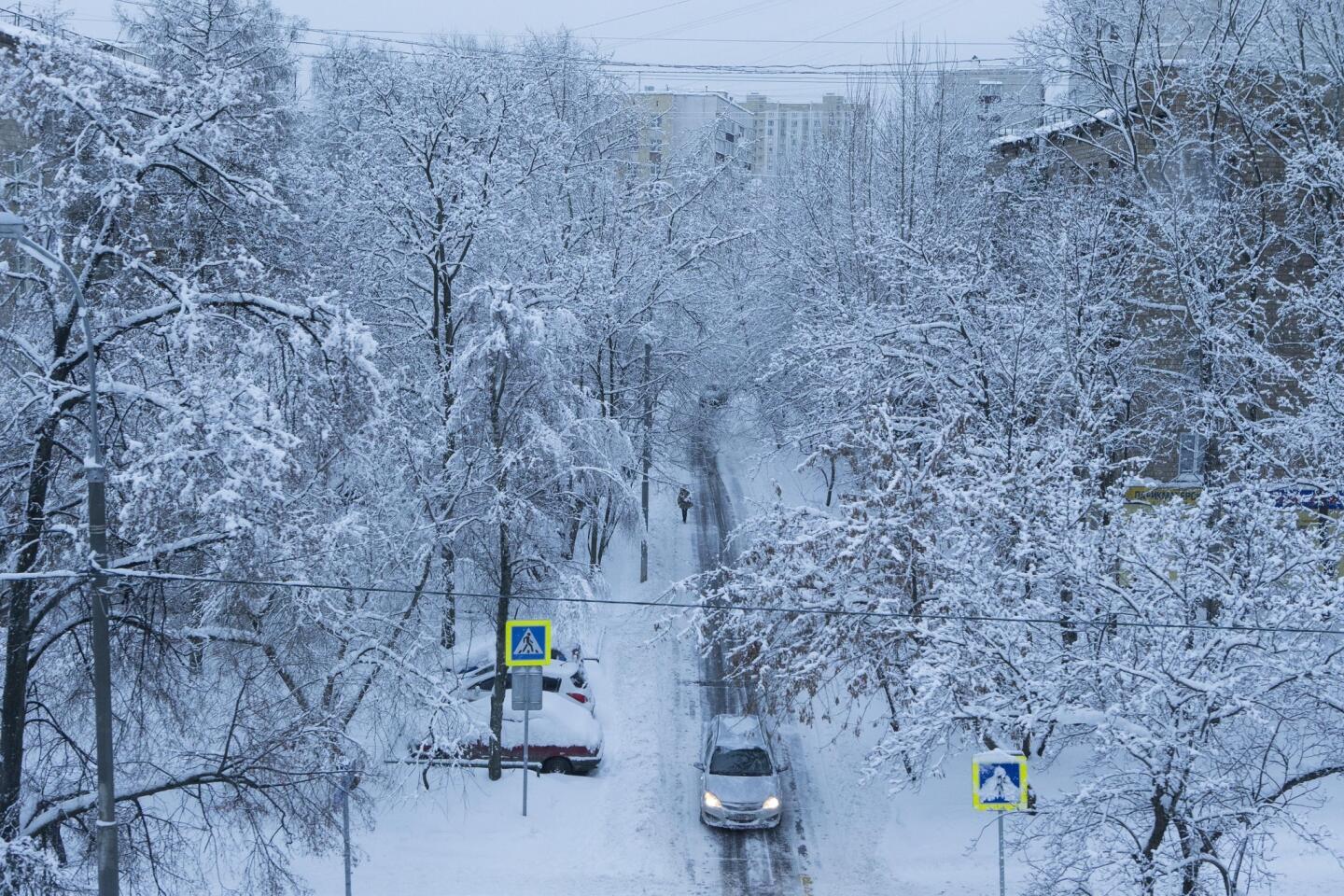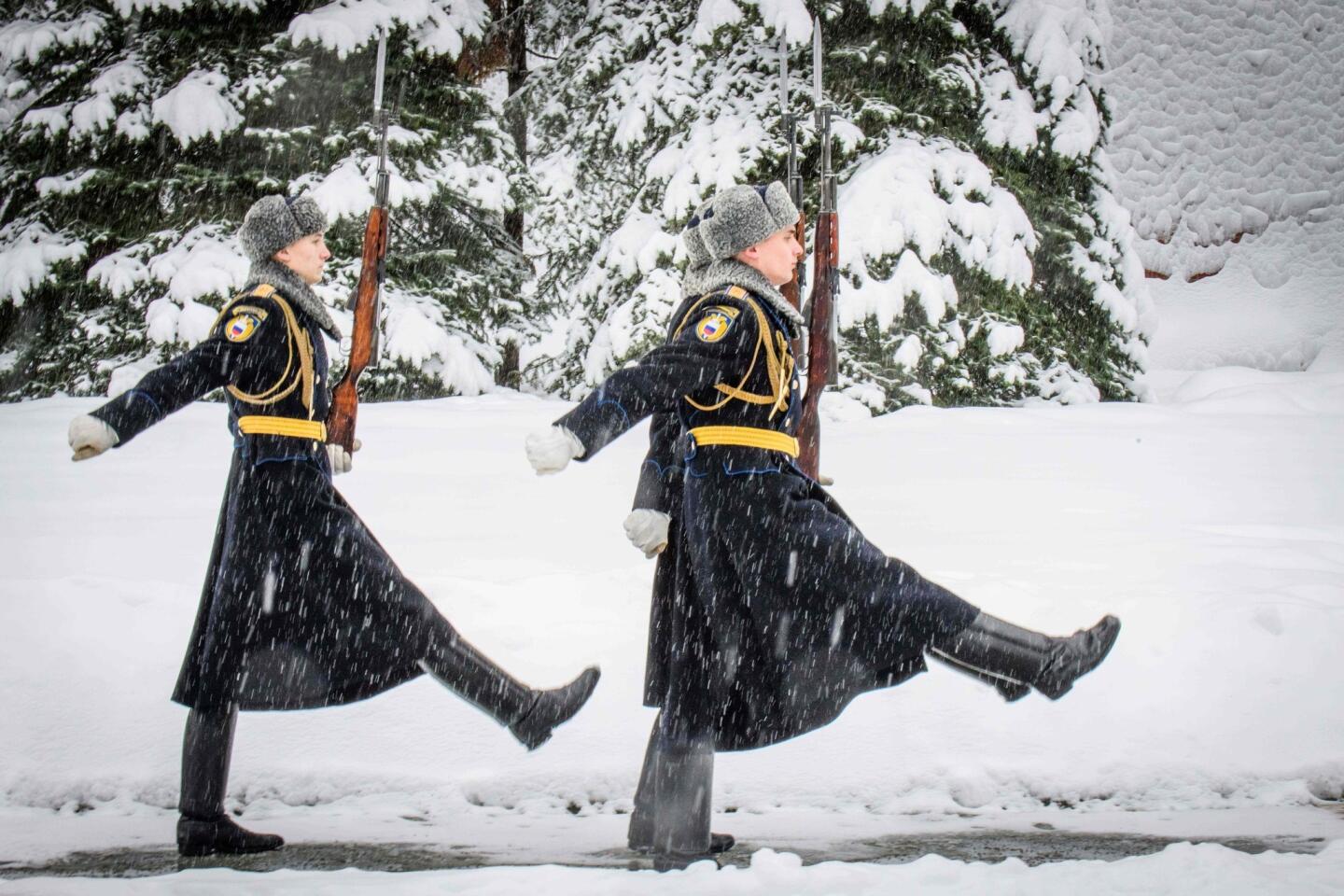How much did it snow? It snowed so much that Moscow called a snow day. That never happens
- Share via
Reporting from Moscow — When Moscow Mayor Sergei Sobyanin tweeted late Sunday that schoolchildren should stay home from classes Monday morning because of heavy snowfall in the Russian capital over the weekend, there was a collective gasp on the internet.
Moscow and snow have always been a match made in hell — a 6-month-long stream of early darkness, subzero temperatures and frequent snowstorms. The streets can stay icy for months. Of all of Europe’s large cities, Moscow and its 14 million residents can handle a winter storm, and they pride themselves on finding a unique beauty in the harsh nature of their winters.
Generations of Muscovites have never known a snow day. As far back as anyone can remember, Moscow schools have never been canceled because of weather.
“Goodness, Moscow mayor has allowed children not to attend school tomorrow because of the continuing snowfall,” Leonid Rogozin, a Russian journalist, tweeted from Berlin on Sunday night. “I went to school and university in Moscow and never had that. Snowfall is the most ridiculous excuse to miss school. Something is very wrong with this world.”
Others commented that the snow day was unwarranted, given that most Moscow city schools are within walking distance of students’ homes.
“Sergei Semyonovich,” tweeted Olga Scheglova using the polite form of addressing the mayor by his first name and patronymic. “There is no reason to give children a relief, schools are often close to home, frost is not strong, let them go.”
The city government and meteorologist insisted that the weekend storm wasn’t just a regular snowstorm. More than 22 inches fell in the center of Moscow by Monday morning. That’s the equivalent of roughly a month’s worth of snowfall in 36 hours, making it the biggest snowfall in Moscow since meteorological records began, Russian media reported.
It was the storm of the century.
“Heavy snowfall will not stop at night or tomorrow,” the mayor tweeted at 7 p.m. Sunday. “The road situation will be difficult. It is better to refrain from traveling in personal cars if possible. School attendance is declared free.”
Flights were canceled and rescheduled at all three major airports.
The storm started early last week, turning Moscow’s central streets into a picturesque winter painting, sparkling under the $10.4 million colorful lighting systems the city government erected for the winter holidays. It was the perfect backdrop for selfies and Instagram videos — a favorite pastime of Moscow’s smartphone-wielding, cosmopolitan population.
All week, city workers have been on roofs, pushing off piles of accumulating snow. Many of Moscow’s 19th century buildings have steep, slanted roofs with alcoves, so workers tether themselves together for safety. The lumps typically land with a thump on sidewalks below (making for another Instagram video trend); to protect unwary pedestrians below, city workers have installed red-and-white striped ribbons to cordon off sidewalks subject to hurtling snow.
But the ribbons are often ignored by pedestrians in a hurry, and there have been occasional accidents, in which an outlaw pedestrian gets sprayed by a cloud of snow — often eliciting a smirk from the spotter on the ground.
Temperatures rose slightly on Saturday, and wet snow turned streets into a slushy, gray mess. In places the slush became ankle-deep puddles. On Sunday, fresh, cold snow began falling on top of the frozen slush puddles, creating a slippery new hazard.
By Monday, the epic snowfall had a name. Russian meteorologists were calling the back-to-back storms the “Arctic invasion.”
The army was called in to help some 3,000 city crew members with the snow removal. City workers shoveled sidewalks and then chipped away at the thick ice layer below. Snowplows and snow removal trucks worked all night to clear the streets.
City officials said it could take up to nine days to get all the streets clear.
The mayor’s snow day announcement seemed intended to keep people off the streets, so workers could get more areas cleared without the disruption of cars and pedestrians.
“There is no collapse, no catastrophe. The city is functioning as normal,” Sobyanin said, convincing no one.
It should be said that complaining has always been a favorite Muscovite pastime. At the same time, the city’s ability to power through its frigid winters is part of defining its place in a country that has seen its fair share of tragedies and upheavals over the last century, yet still managed to survive.
For every grumble about the slow process of snow removal, there were plenty who were taking advantage of it.
Just a 30-minute subway ride north of the city center is Sokolniki Park, a winter playground with several miles of ski trails, separate ice trails and a rink for skating, and acres of woods for strolling. Entrance is free.
By midday Monday, the park was full of people young and old taking advantage of the storm of the century’s snowfall. The sun was just visible behind the thinning clouds.
“This is the best snow for skiing,” said Yevgeny Zhudanov, 72, who was making his way through the wooded cross-country ski trails. “You’ve got to get out and breathe the air while you can.”
“It’s the most beautiful I’ve seen Moscow in a long time,” said Svetlana Anatolyovna, a pensioner who declined to give her full last name, because “you never know who’s listening” when talking to a foreigner. She was dressed in a long fur coat with a rose-colored felt hat as she strolled around the park’s central, circular path and watched as young couples posed for selfies and moms pushed bundled babies in strollers.
“How do you like our winters?” she asked with a smile.
The snow had started falling again and the temperature was expected to drop to 5 degrees overnight. The forecast was already in for Tuesday: more snow.
Twitter: @sabraayres
Ayres is a special correspondent.
More to Read
Sign up for Essential California
The most important California stories and recommendations in your inbox every morning.
You may occasionally receive promotional content from the Los Angeles Times.

